Living on a narrowboat - the stove as the heart of the home
Previous post in this series: Living on a narrowboat - embracing constraints.
In Living on a narrowboat - embracing constraints I briefly mentioned the stove I'm getting. This post is about choosing a stove in general, and how I came to my decision and the factors I considered.
For keeping the cabin warm, some modern boats might rely mainly on a radiator circuit. Some even have underfloor heating. Some have an electric heater and fan combination that pushes warm air into the cabin, a little bit like in a car. And of course some (I would suggest the majority) have a standalone stove of some sort.
And if you're going to have a stove, the choice of stove is important, and also based on what can be seen as constraints. Cabin size, smokeless fuel restrictions, and more. There's the question of fuel too - you can get stoves that run on diesel, wood, or wood & coal ("multifuel").
The stove on Queenie
I spent some time on a narrowboat called Queenie that I rented from Star Narrowboat Holidays (you can see a picture of her moored up in the first post in this series) and Queenie had an electric heater and fan mechanism, plus a small multifuel stove. I didn't use the former as it was noisy and not particularly effective, so I relied solely on the stove. One of the trips was in February, when the temperatures in the UK are still fairly low (often around freezing) so it was a good test.
Queenie is a relatively small narrowboat, being only 50 feet in length, with a inside cabin length of probably 12 feet less than that. The stove on Queenie is the Hobbit model from Salamander. You can just see it in this photo from another post that I wrote about one of my stays on her (Allowing my intangible core to catch up with the rest of me...):
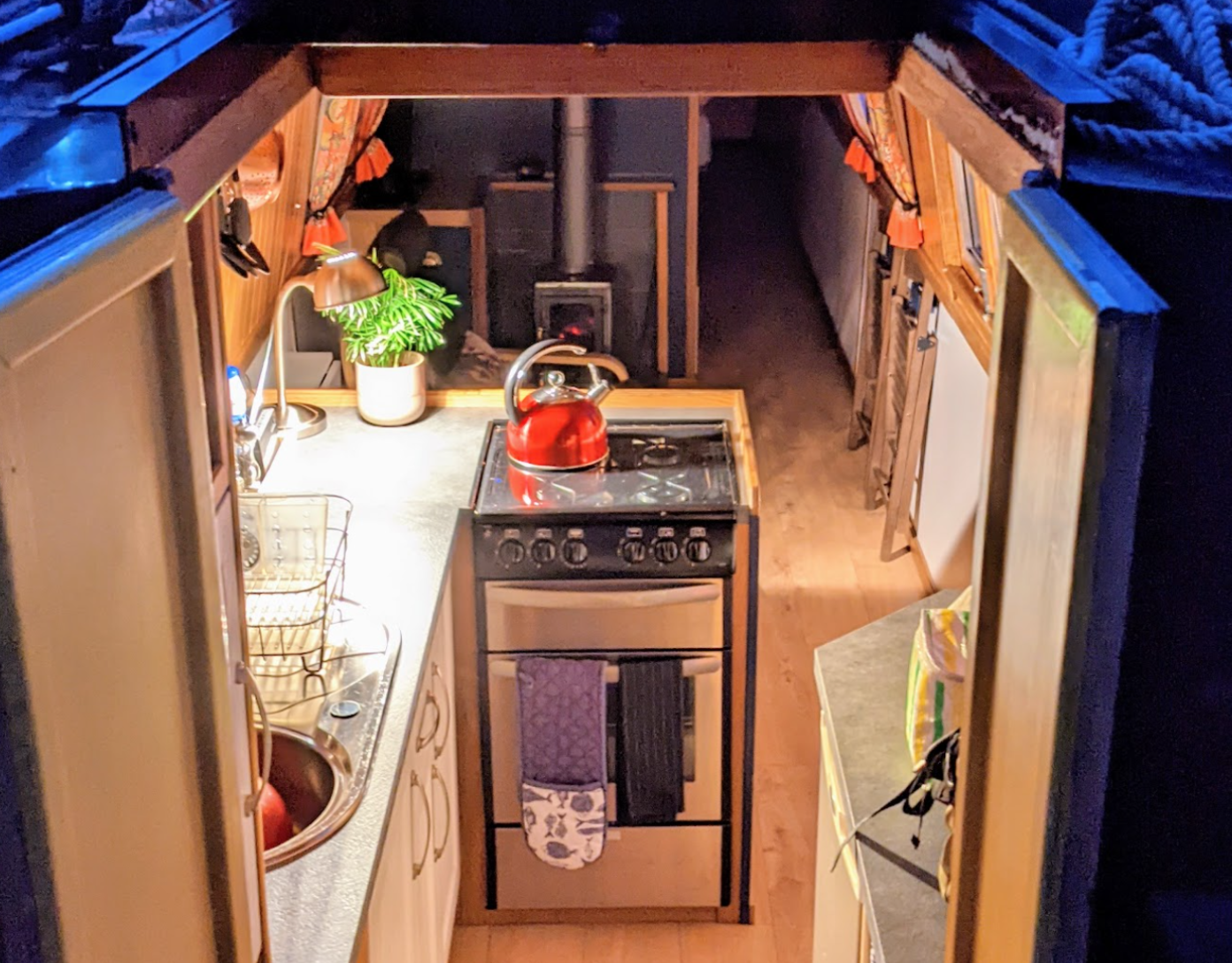
The stove itself is quite small, somewhat dwarfed by the flue pipe rising from it. You can check the stove's dimensions in the Technical Data section of the Hobbit's page. The output is nominally 4.1kW.
I noted both advantages and disadvantages to this stove on Queenie, based on its small size and heat output:
- I burned less fuel, and it was relatively easy to regulate
- it was not quite enough to comfortably heat the entire cabin
The multifuel nature of the stove meant that I could burn wood or coal (of the smokeless variety of course) but longer term, the inner dimensions would make it more onerous than I would like to find or cut up wood to fit the small space.
So I ended up discounting the Hobbit early on in my research.
The stoves I've had previously
A slightly larger stove is the Squirrel, from Morsø. When I lived in East Sussex, I had the 1410 model, and then the 1412 model more recently in Manchester. This newer model is DEFRA approved for use in smoke-controlled zones.
In fact, you can see it in quite a few of my Untappd beer check-ins, like in this one of the classic Tripel from Westmalle:
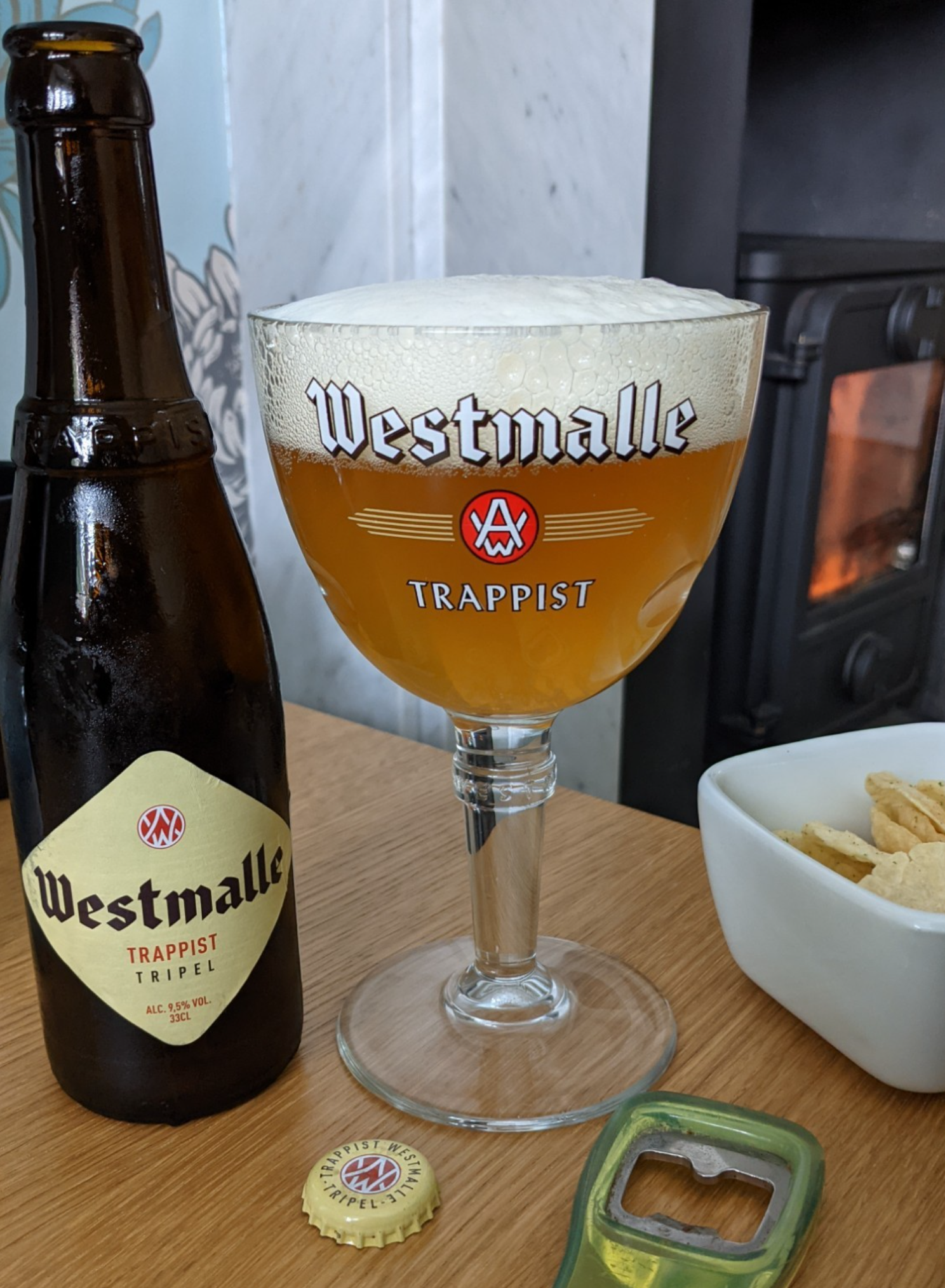
The output of the Squirrel is rated at 5kW, and in general it's larger than the Hobbit. Both these aspects would mitigate the issues mentioned earlier, and in fact this was the stove I was going to choose for the narrowboat, if I hadn't had a stroke of luck.
Double or triple duty
That luck came at the Crick Boat Show last year. First though, some background. As I mentioned in the post about embracing constraints, the stove would ideally serve not only as a general source of heating, but also provide a way to boil water for tea and coffee, a surface on which to put a casserole dish (or dutch oven) for slow cooking, and, as a bonus, have a separate oven for baking. These are often called "range" stoves.
In this context, before making the final decision to opt for the Squirrel (which had a reasonably sized top plate), I had a look around at multifuel range stoves, i.e. a stove with an oven built in. But my initial search was in vain. By that I mean there were plenty, but they were either too small, too large, too tall or would emit too much heat for the cabin and / or looked a bit too rustic.
I'd more or less shelved the idea of finding a range stove, but at Crick Boat Show last year I saw a range stove in one of the boats I went on to view (just to get ideas of layout, design, and so on). It looked almost ideal!
Speaking to the boat sales person, I found out it was from Chilli Penguin. It had a modern design, was about the right size (neither too small nor too large) and had a 5kW output rating:
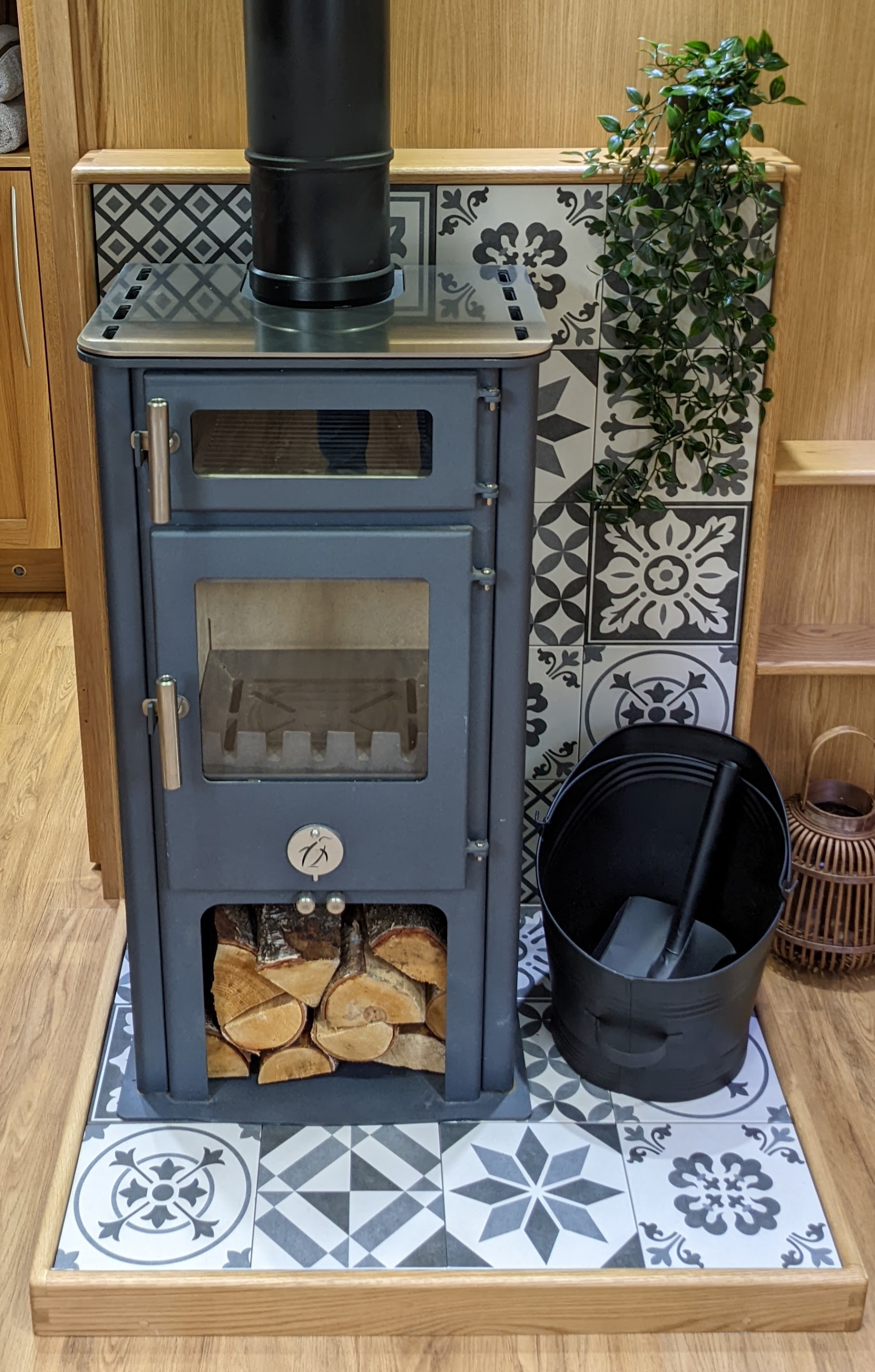
Beyond the design and specifications, I particularly liked the oven above the fire box, and the stainless steel plate on top.
Chilli Penguin stoves and my selection
It turned out that Chilli Penguin offered a good selection of stoves around the 5kW output mark, all of which were going to be a good size for the narrowboat. Not too large, but not too small either.
The selection offered various combinations of aspects, and I ended up choosing the Fat Penguin (Tall Order), which has:
- a nominal output of around 5kW
- a modern, compact design
- a larger oven (this is the "Tall Order" bit in the name)
- side convector panels (this is the "Fat" bit in the name) that will heat the cabin and move the air around effectively*
- a slightly larger top plate (due to the extra width from the convector panels) for more space for moka pot, kettle and dutch oven placement
*Though I still may get a stove fan
Here are the specs:
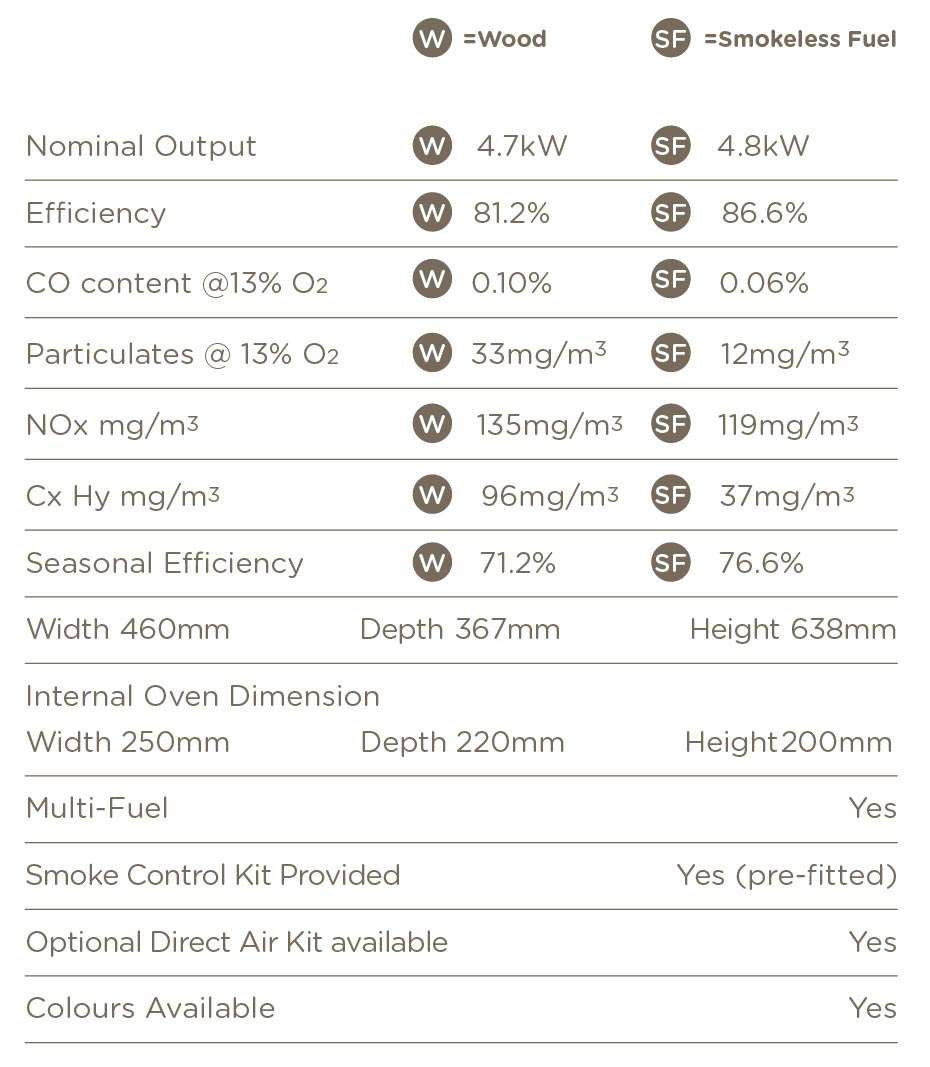
A brief note on diesel stoves
It's worth mentioning diesel stoves before I finish this post. Until I started researching stoves for narrowboats, I'd never even come across one particular type, the diesel stove. Having a stove that uses diesel for fuel makes some sense, and is an attractive option for some people. It burns clean, and there's no ash or coke to clear out of the fire box. It's generally a lot cleaner all round.
And if your narrowboat is diesel powered anyway, you're going to be carrying diesel fuel already, for the engine and perhaps also for a diesel powered water heating system too (see the section Electricity and fuel for the engine and for the stove in the "embracing constraints post"). So a diesel stove would be a good logical choice.
But it's not all about logic. Certainly not for me. I like a real fire, I like the ability to forage for and gather fuel from fallen branches. And there's something mesmerising, not to mention cosy, in the flames of a real fire. So while stoves like the Refleks are a popular choice these days, I'm sticking with my multifuel experience.
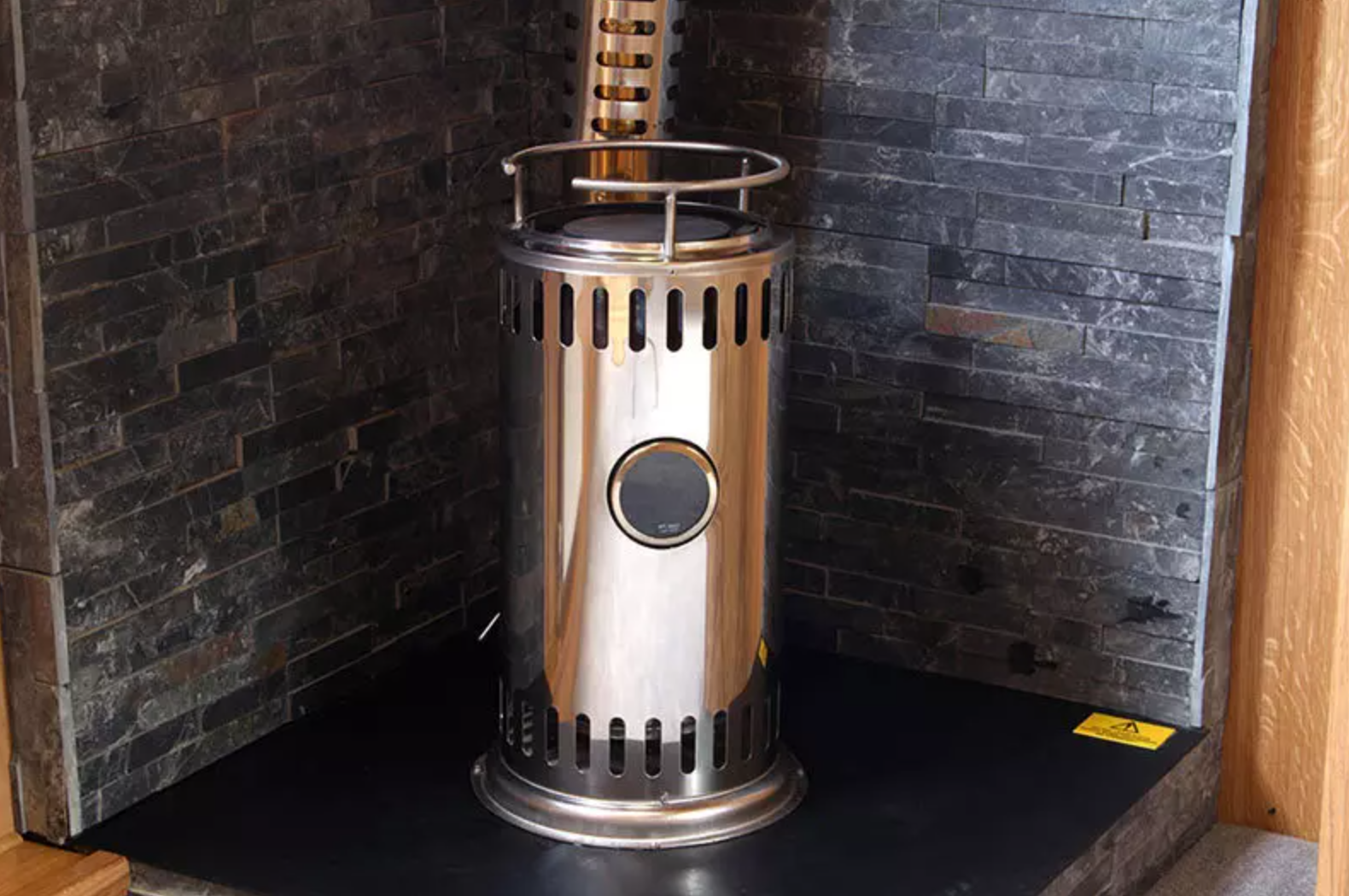
This picture from The Fitout Pontoon's page on oil fired heating shows a typical Refleks diesel stove. You can see it sports a small round hot plate on top, but that's about it for double duty.
Conclusion
So while I would have been happy with the Morsø Squirrel 1412, I'm even happier with the prospect of the Fat Penguin (Tall Order) stove. It's on order, and delivery is due some time in June. It's this one, although I'm getting it in grey, not red:
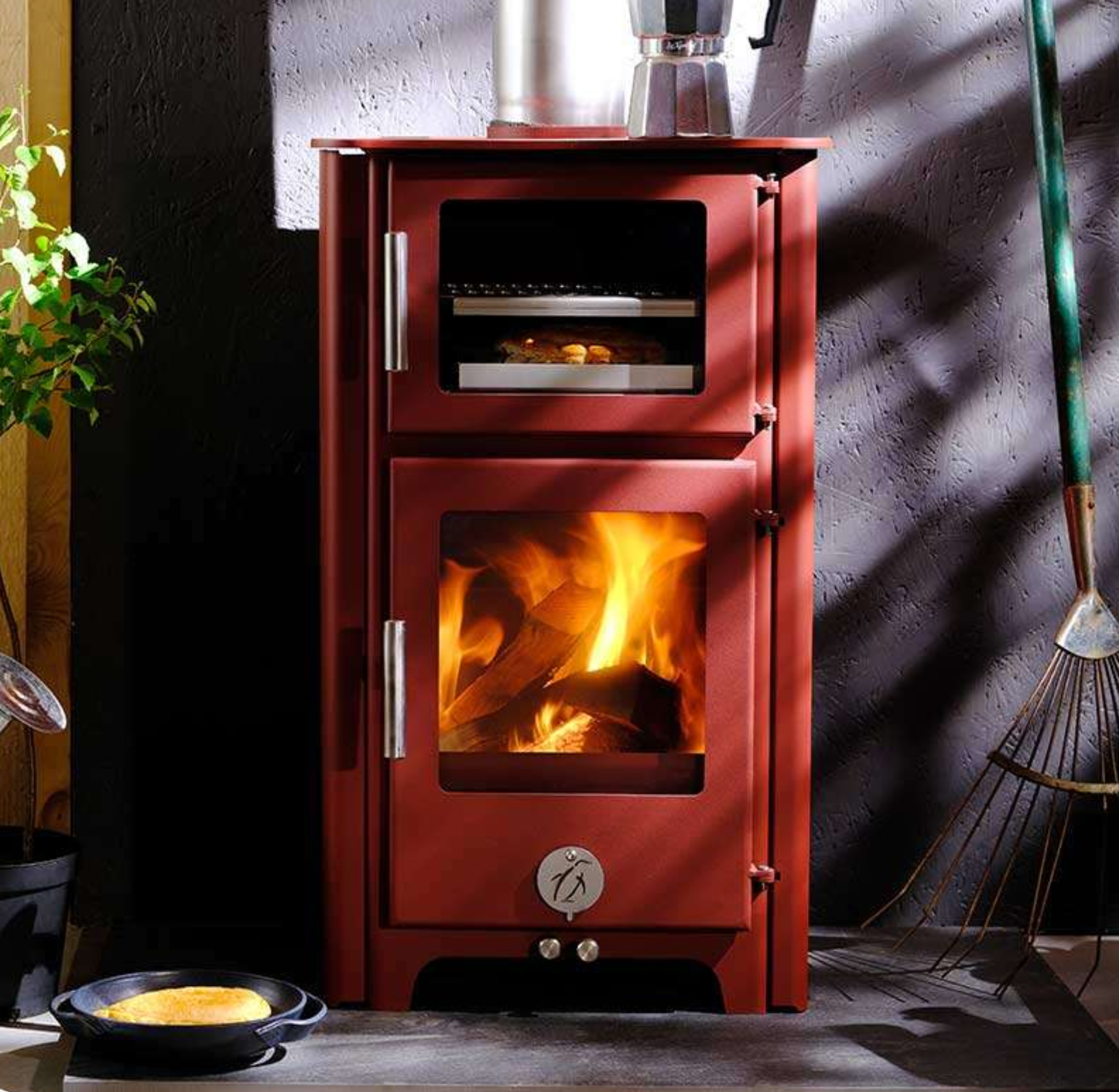
I'm looking forward to seeing it installed and on board soon!
Next post in this series: Living on a narrowboat - layout details of the stern.